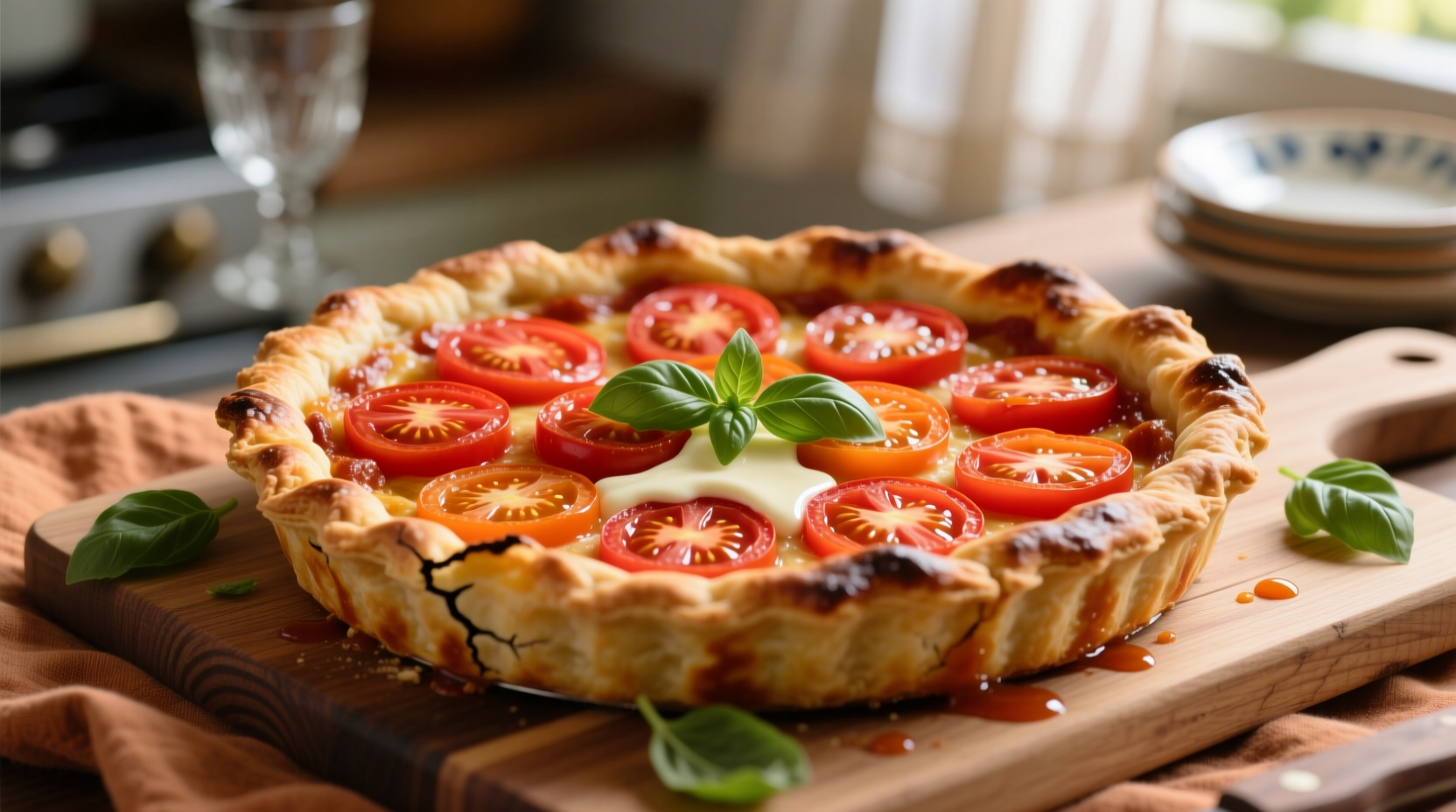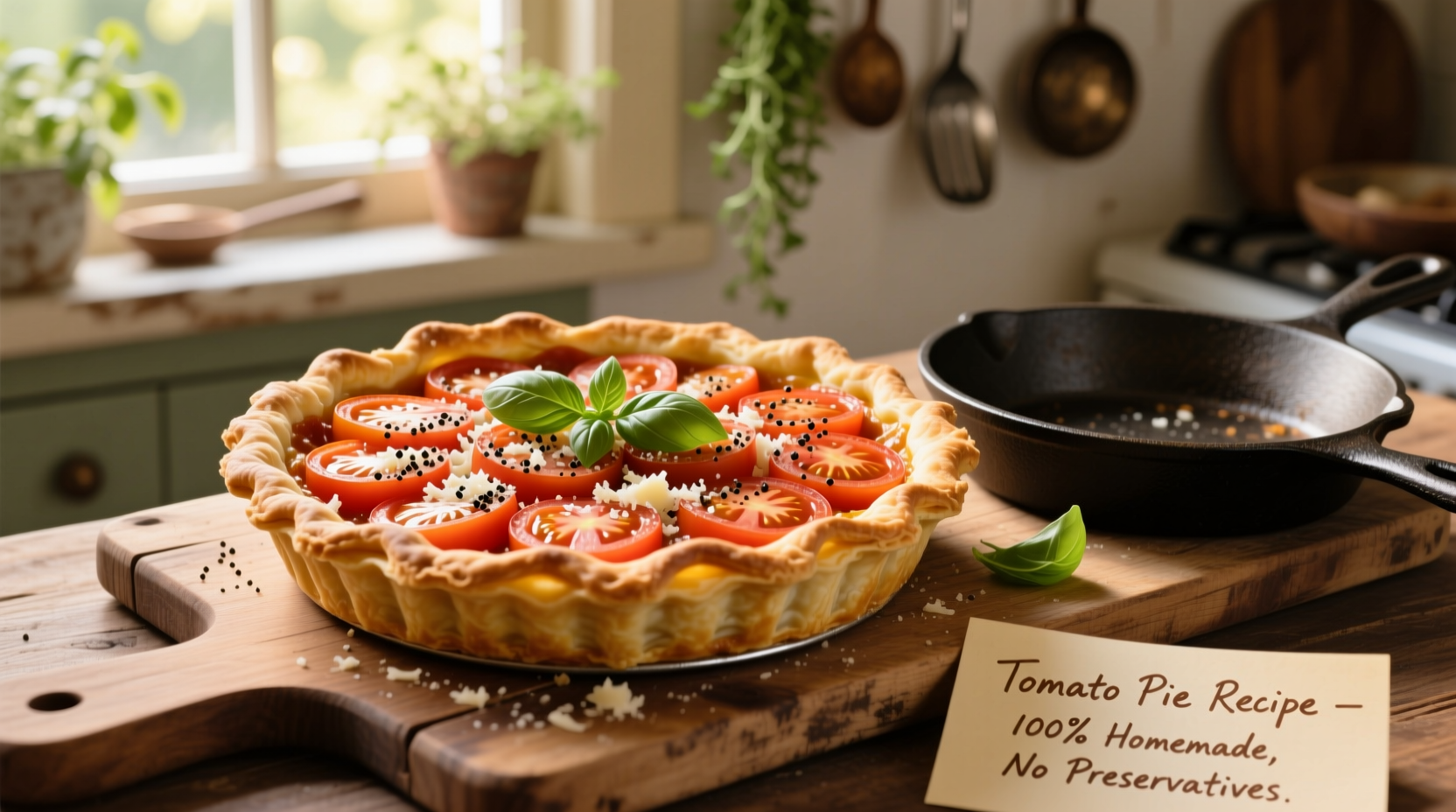The Essential Guide to Perfect Tomato Pie
Tomato pie isn't just another pizza variant—it's a distinct culinary tradition with deep roots in Philadelphia's Italian-American communities. Unlike pizza, authentic tomato pie features a thick layer of uncooked tomatoes placed directly on the dough before baking, creating a unique texture and flavor profile that's both rustic and sophisticated.

Understanding Tomato Pie's Culinary Journey
While often confused with pizza, tomato pie has evolved through distinct historical pathways. This timeline reveals how regional interpretations developed across different communities:
| Time Period | Key Development | Regional Influence |
|---|---|---|
| Early 1900s | Italian immigrants create "tomato pie" in Philadelphia bakeries | South Philadelphia neighborhoods |
| 1920s-1940s | Distinct from pizza with uncooked tomato topping | Established as separate menu item |
| 1950s-1970s | Spread to New Jersey shore communities | Modified versions with cheese added |
| 1980s-Present | National recognition through food media | Modern interpretations across America |
This evolution shows how tomato pie maintained its identity while adapting to different regional preferences. According to the National Geographic Food Archives, the Philadelphia version remains the most authentic representation of this culinary tradition.
Before You Start: Essential Equipment and Prep Work
Successful tomato pie begins with proper preparation. Unlike pizza, where timing is critical, tomato pie requires strategic planning to manage moisture content and flavor development.
Must-Have Tools
- Perforated pizza pan or baking steel (critical for preventing soggy bottoms)
- Microplane grater for fresh garlic (finer distribution than chopping)
- Moisture-absorbing paper towels (for tomato preparation)
- High-heat olive oil (regular olive oil burns at pizza temperatures)
Ingredient Preparation Guide
The secret to exceptional tomato pie lies in proper tomato preparation. Roma tomatoes work best due to their lower water content, but proper handling is crucial:
- Cut tomatoes crosswise, not lengthwise, to expose more surface area
- Place cut-side down on paper towels for 20 minutes to absorb excess moisture
- Lightly salt tomatoes to draw out additional water (discard after 10 minutes)
- Use a pastry brush to apply olive oil directly to dough before adding tomatoes
The Classic Philadelphia-Style Tomato Pie Recipe
This authentic recipe follows the traditional preparation method used in South Philadelphia bakeries since the early 20th century. The key difference from pizza? No cheese on top—just pure tomato flavor enhanced with simple seasonings.
Ingredients for Perfect Tomato Pie
- 1 lb pizza dough (preferably cold-fermented for 72 hours)
- 3 medium Roma tomatoes, sliced 1/4" thick
- 3 tbsp high-quality extra virgin olive oil
- 2 garlic cloves, microplaned
- 1 tsp dried oregano
- 1/2 tsp red pepper flakes
- Fresh basil leaves (added after baking)
- Kosher salt and freshly ground black pepper
Step-by-Step Preparation
- Preheat oven to 500°F (260°C) with baking steel or pizza stone inside for at least 45 minutes
- Prepare dough by stretching to 12" circle without tearing (use semolina flour to prevent sticking)
- Brush dough with 2 tbsp olive oil, leaving 1/2" border for crust
- Arrange tomatoes in overlapping concentric circles, slightly overlapping
- Season with garlic, oregano, red pepper flakes, salt, and pepper
- Bake for 12-15 minutes until crust is golden and tomatoes show slight caramelization
- Finish with remaining olive oil and fresh basil immediately after baking
Professional tip: The tomatoes should maintain their shape but show slight shrinkage at the edges. Overcooked tomatoes become mushy and lose their distinct flavor.
Regional Variations Worth Trying
While Philadelphia-style remains the gold standard, different regions have developed their own interpretations. Understanding these variations helps you choose the right approach for your taste preferences and occasion.
| Variation | Key Characteristics | Best For | When to Avoid |
|---|---|---|---|
| Philadelphia Original | No cheese on top, simple seasoning, thick tomato layer | Traditionalists, summer gatherings | Cold weather meals |
| New Jersey Shore | Cheese added before baking, thinner tomato layer | Casual weeknight dinners | Authenticity-focused occasions |
| Southern Tomato Pie | Biscuit crust, creamy filling, baked tomatoes | Brunch or holiday meals | Quick weeknight preparation |
| Modern Gourmet | Specialty tomatoes, artisanal cheeses, creative toppings | Special occasions, entertaining | Traditional pizza night |
According to the American Food Roots Project, the Philadelphia version maintains the highest authenticity rating among culinary historians, while the Southern variation represents a completely different dish that shares only the name.
Troubleshooting Common Tomato Pie Problems
Even experienced cooks encounter challenges with tomato pie. These solutions address the most frequent issues based on professional kitchen experience:
Soggy Bottom Crust
Cause: Excess tomato moisture seeping into dough
Solution: Always drain tomatoes thoroughly and apply olive oil barrier to dough. Bake on lowest oven rack for first 5 minutes to ensure bottom crust sets quickly.
Bland Flavor
Cause: Underseasoned tomatoes or low-quality ingredients
Solution: Season tomatoes directly with salt before arranging. Use high-quality olive oil as it carries flavor. Add garlic after baking if raw garlic flavor is too strong.
Tomatoes Sliding Off
Cause: Improper arrangement or insufficient oil barrier
Solution: Overlap tomato slices like shingles and press gently into dough. Use enough olive oil to create slight adhesion without making dough soggy.
Storage and Reheating Guide
- Fresh: Best consumed within 2 hours of baking
- Refrigerated: Store uncovered in refrigerator for up to 2 days
- Reheating: 350°F oven for 8-10 minutes (never microwave)
- Freezing: Not recommended—texture deteriorates significantly
Frequently Asked Questions
What's the difference between tomato pie and pizza?
Tomato pie features uncooked tomatoes placed directly on the dough before baking, creating a distinct texture where tomatoes caramelize into the crust. Traditional Philadelphia-style tomato pie has no cheese on top, unlike pizza which typically includes cheese beneath or on top of the sauce.
Can I use regular tomatoes instead of Roma tomatoes?
Yes, but Roma tomatoes are preferred due to their lower water content. If using regular tomatoes, increase draining time to 30 minutes and consider salting them for 15 minutes to remove excess moisture before use.
Why does my tomato pie crust get soggy?
Soggy crust typically results from insufficient tomato draining or inadequate oven temperature. Ensure tomatoes drain for at least 20 minutes, apply olive oil directly to the dough before adding tomatoes, and preheat your oven to 500°F with baking steel inside for 45 minutes before baking.
When should I add cheese to tomato pie?
Traditional Philadelphia-style tomato pie has no cheese on top, but some regional variations include cheese. If adding cheese, use a light sprinkle of pecorino romano after baking, not before. For New Jersey-style variations, add a thin layer of mozzarella before baking but keep it minimal to maintain the tomato-forward flavor profile.











 浙公网安备
33010002000092号
浙公网安备
33010002000092号 浙B2-20120091-4
浙B2-20120091-4